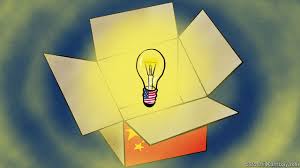Fears that China has hurt innovation in the West are overblown

POPULAR concern about free trade with China has focused on the loss of manufacturing jobs in America and Europe. Policymakers have an additional worry: that China’s rise is hurting innovation in the West. This fear is among the small set of issues that unites American Democrats and Republicans. In 2016 Barack Obama’s commerce secretary said that China’s state-driven economy would weaken the world’s innovation ecosystem. Donald Trump’s advisers allege that China makes it harder for foreign firms to invest in innovation by squeezing their returns. Mr Trump’s trade team was expected to raise this complaint, among others, with Chinese officials during talks in Beijing on May 3rd and 4th, as The Economist went to press. There is one problem. Data suggest that competition with China has coincided with more innovation in America, not less.
The relationship between competition and innovation is complex, even before considering trade with China. Economists agree that the right competitive landscape fosters innovation. But they disagree about what exactly that landscape looks like. More competition might prod companies to try harder to develop new products in the hope of gaining market share. Alternatively, if competition is cut-throat, profits might evaporate to the point that companies have little incentive to take risks.
The fear is that China generates the wrong kind of competition and stunts the good kind. Businesspeople elsewhere worry that when the Chinese government decides to fund this or that industry, investment soars and margins collapse. Overcapacity in steel was caused in part by Chinese investment in steel processing; semiconductor firms think their industry might be next. At the same time, argues Robert Lighthizer, the US Trade Representative, foreign companies that beat their Chinese competitors are not adequately rewarded because China presses them to transfer their intellectual property.
The two main academic papers on this question looked at the years around China’s accession to the World Trade Organisation in 2001. Far from settling the matter, they were contradictory. Economists studying European companies found that competition from Chinese imports both caused firms to improve their technology and led to a shift in jobs to the most advanced firms. They concluded that 15% of the upgrading of technology in Europe between 2000 and 2007 could be attributed to the increase in imports from China. But economists examining the impact on America argued that, on the contrary, Chinese competition had led companies to spend less on research as profits fell. They calculated that imports from China explained 40% of a slowdown in American patenting between 1999 and 2007, compared with the preceding decade.
The IMF has now weighed in with more recent figures. Its conclusion is rather more cheerful, at least for those who think a trade war with China is a rotten idea. In a report published in April the fund showed that, following an extended period of decline, high-quality patents granted to American companies had risen sharply between 2010 and 2014. It also pointed to a big increase in American spending on research and development during the same years—even as America’s trade deficit with China rocketed (see chart). The growth in patents was more sluggish in Europe and Japan. But both patents and research spending soared in South Korea, the country most directly exposed to manufacturing competition from China.
A separate IMF working paper late last year unpicked some of what is happening in America. Competition from Chinese imports has caused research spending to be reallocated within certain industries, away from also-rans and towards the most productive and profitable firms. At the same time, many researchers left manufacturing industries and moved into service sectors such as data-processing and finance. Both results are consistent with an American economy that is playing to its strengths. The IMF’s analysts concluded that Chinese imports were not a threat to innovation in America, after all, and that policymakers could take a deep breath. No loud inhaling sounds have yet been reported from the White House.
This article appeared in the Finance and economics section of the print edition under the headline “China chill”









